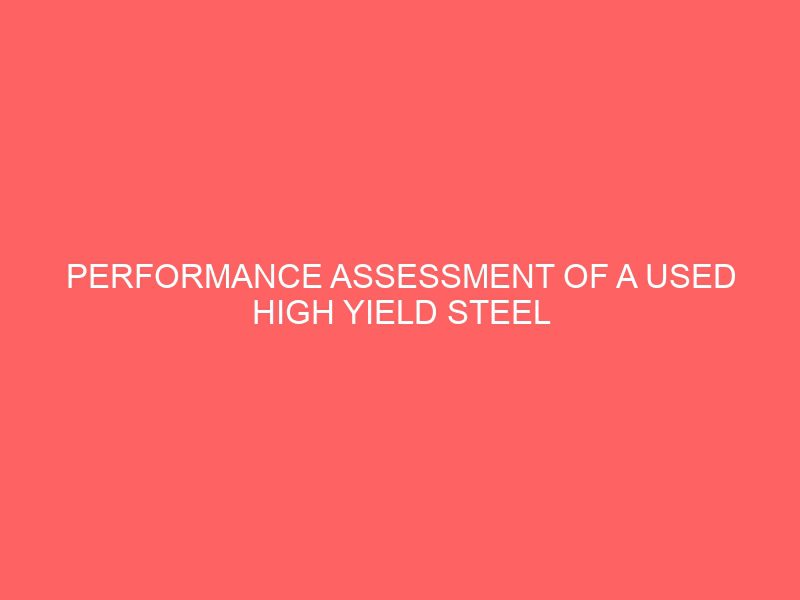Description
CHAPTER ONE
1.0 INTRODUCTION
It was discovered that steel can be added to produce a rigid and stable structure because concrete is good in compression while poor in tension and steel reinforcement bar is good in tension. Reinforcing steel is generally provided in the form of bars or welded wire fabric to enhance the bond between steel and concrete and to mechanically inhibit the longitudinal movement of the bar relative to the concrete around it. The steel bar commonly used are high yield bar and having specified yield strength of 460N/mm2 and mild steel bars are less commonly used in reinforced concrete because they posses less strength of 250N/mm2, mild sled bars can readily be bends are necessary such as for links in narrows beam or columns.
The versatility of steel for structural application rests on the fact that it can be readily supplied at a relatively cheap price in a wide range of different product forms, and with a useful range of material properties. Steel is an efficient material for structural purposes because of its good strength to weight ratio. Steel can be supplied with strength levels from about 250N/mm2 up to about 2000N/ mm2 for common structural applications although the strength requirements may limit the product form.
The substances that determined the type of steel used in the building construction is the mechanical properties of steel especially (strength) while steel derives its mechanical properties from a combination of chemical composition, heat treatment and manufacturing process, and the major constituent of steel is always carbon and iron the addition of very small quantities of other elements can have a marked effect upon the type and properties of steel. An increase in carbon content result in an increase hi strength but this is accompanied by a marked decrease in ductility. In the commercial testing of structure steel an upper limit of strength is pressurized for the steel in addition to a default it maximum value for the percentage elongation.
1.2 Statement of the problem
Based on some structural failure and deterioration in recent years as a result of either over loading of the structure or use substandard material which steel reinforcement include resulting to loss of lives and properties. Design based on British standard specified characteristics strength obtainable for most steel bars. In order to prevent future occurrence of incidence of collapse of structures and severe deterioration it is imperative to ensure standard and in our construction industries.
1.3 Justification
Some of the high yield steel reinforcement bars used in the construction sites have a lesser yield strength than that specified by the code of practice (BS8110/EURO CODE 2). The uses of substandard materials result in the loss of tile and properties, therefore the consequences these necessitated the need to check the possibility of using recycled steel reinforcement as material.
1.4 Aim and Objectives
Aim
The aim of this work is to assess the performance of a new and recycled steel with a view to determine the characteristics strengths of each.
Objectives
- To determine the ultimate tensile strength of used steel reinforcement bars.
- To determine the yield strength of used/newly Obtained steel reinforcement bars
- To compare the value of characteristics yield strength with that of codes of practice (British Standard)
1.5 Scope and Limitation
Research was limited to 8mm, 10mm, 12mm, and 16mm diameter of reinforcement bars for both newly and used reinforcement bar.
1.6 Significance of the Research
Structure deterioration and failure is on the increase in recent years as a result of using substandard materials. The research work is significance because it will help in developing standard quality of construction material.
1.7 Methodology
In this project research, the samples are selected from set of reinforcement steel bars base on the diameter size without any restriction, universal testing machine was used to determine the characteristic yield strength and ultimate tensile strength on the selected sample, each sample Has been cut into 400mm with gauge mark of 200mm on it.








Reviews
There are no reviews yet.